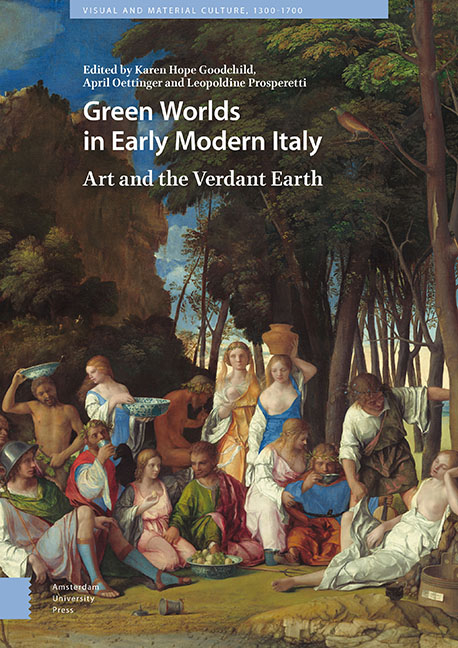Book contents
2 - Anthropomorphic Trees and Animated Nature in Lorenzo Lotto's 1509 St. Jerome
Published online by Cambridge University Press: 21 November 2020
Summary
Abstract
Saint Jerome in a Landscape is one of Lorenzo Lotto's most remarkable works, created when Lotto painted in Rome alongside Raphael. Discussions of the panel focus on Lotto's affinity for Raphael, yet overlook the most unusual features of the painting: the vigorous ‒ and un-Raphaelesque ‒ trees scattered in the middle ground and in the foreground, and the stump of a felled tree that mirrors the muscular torso of Jerome. This essay explores sources ‒ ranging from Durer's woodcuts and the Hypnerotomachia Poliphili to Michelangelo's frescos in the Sistine Chapel ‒ that informed Lotto’s anthropomorphic lens. More generally, it looks at how Lotto's arboreal protagonists comment on inspiration, transformation, and the relationship between painting and sculpture, nature and art, and humans and nature.
Keywords: Anthropomorphism, Trees, Landscape, Michelangelo, Art Theory, St. Jerome
Hieronymus is of gerar, that is holy, and of nemus, that is to say a wood. And so Jerome is as much to say as a holy wood. Or it is said of noma, that is to say law, whereof is said in his legend that Jerome is interpreted a holy law.
– Jacopo de Voragine, ‘The Life of St. Jerome’, The Golden Legend (13th c.)Of the green worlds that Lorenzo Lotto explored in the early decades of his long and peripatetic career, none is as rich in animated trees as the 1509 St. Jerome. (Plate 4) The panel, which the Venetian painter likely produced during his sojourn in Rome between 1508 and 1509, pictures the Church Father in a rocky outcropping far from civilization, ‘that great desert and waste wilderness […] burnt by the sun’, as the saint described his hermitage to the Roman noblewoman Eustochium, whose letters purportedly informed Jacopo de Voragine's thirteenth-century Golden Legend, as well as a multitude of other hagiographies and spiritual manuals that expanded on the penitential and scholarly deeds of Jerome. Just as Early Modern accounts of Jerome variously embellished the widely popular story of the Church Father, Renaissance painters elaborated on the theme of Jerome, taking particular delight in the wild character of Jerome's wilderness.
In Lotto's version, we find Jerome half sitting and half reclining beside the remains of a monumental tree trunk, whose rippling contours are no less vigorous than the saint's muscular torso, his tronco.
- Type
- Chapter
- Information
- Green Worlds in Early Modern ItalyArt and the Verdant Earth, pp. 49 - 68Publisher: Amsterdam University PressPrint publication year: 2019

